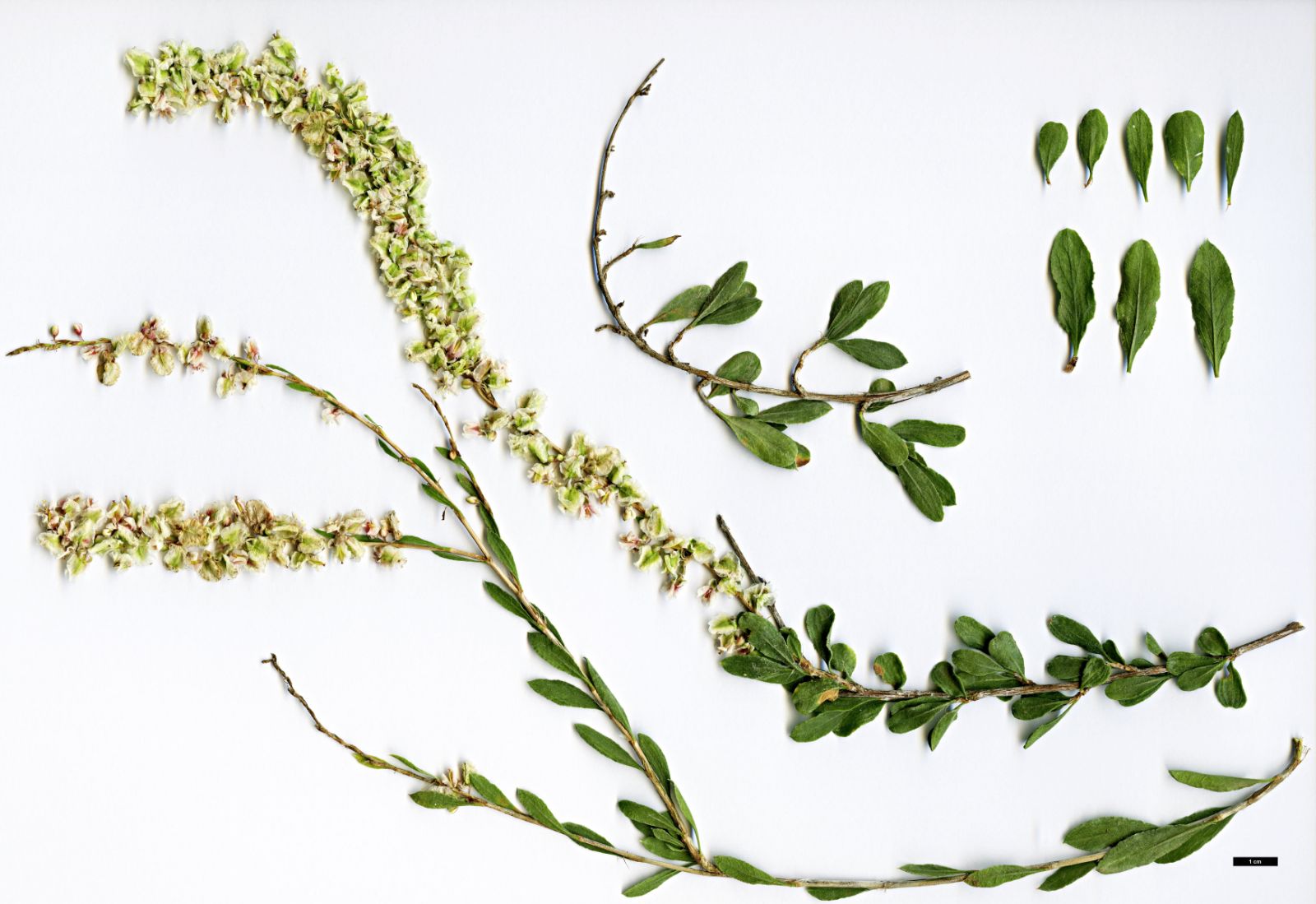Atraphaxis
Credits
Article from Bean's Trees and Shrubs Hardy in the British Isles
Recommended citation
'Atraphaxis' from the website Trees and Shrubs Online (treesandshrubsonline.
Family
- Polygonaceae
Four or five species of Atraphaxis are sometimes grown, but they are scarcely known in. gardens generally. They are amongst the few hardy woody representatives of the polygonum family, being lax-habited shrubs with alternate leaves, and pale, transparent, slender stipules that clasp the stem and terminate in a point at each side. The flowers have no petals, but four or five sepals prominently veined, the inner ones of which persist, keep their colour, and enlarge, ultimately surrounding the fruit. Flower-stalks jointed. They are exclusively Old World plants, extending in a wild state from S.E. Europe to Central Asia. As they do not ripen seed in this country, at any rate commonly, they are best propagated by layers. A sunny position is best for them, and a well-drained sandy soil.

